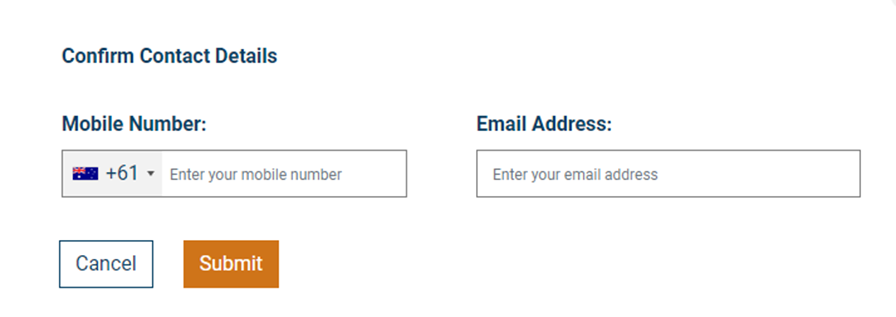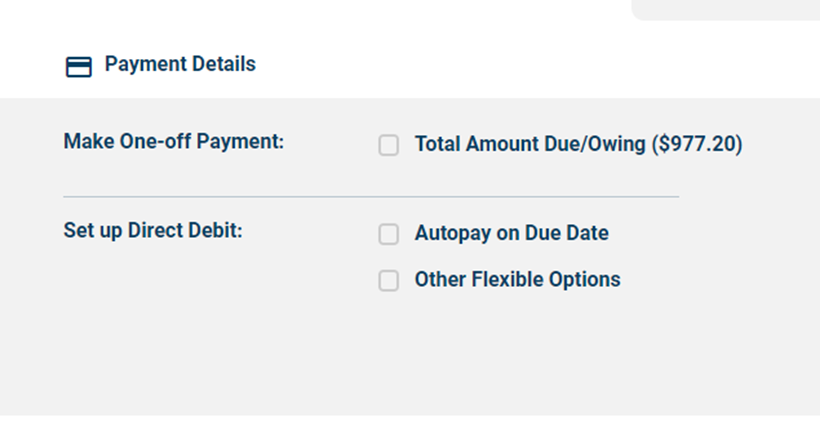Many people live or work in rented houses, apartments or workplaces. Sometimes it can be a little confusing when it comes to responsibilities and paying bills - who is responsible for what? Tenant and landlord rights and responsibilities fall under Victorian state law and GWMWater's policies are in accordance with these laws.
Service charges cover the costs for us to access and maintain the water network connected to your property.
Usage charges pay for the water you use in your home or property for activities such as showering, doing the laundry and cooking. Your usage charges will usually change a little from bill to bill as your water consumption varies.
Residential properties
In residential properties, GWMWater bills for services and usage. In some cases a tenant may pay for water usage if the lease specifies this responsibility. However, a landlord can't give the tenant responsibility for water usage costs unless that property has its own water meter (e.g. not a shared water meter in an apartment building).
Check the below table to see what fees or charges you might be responsible for:
Landlords |
Tenants |
|
| Service charge (water and wastewater) | Yes | No |
| Usage charge | Yes | Yes* |
| Meter reading for incoming or vacating tenant | Yes | No |
| Notice of property vacation | Yes | Yes* |
| Eligible for financial concessions | No | Yes |
*Only if the tenant has accepted responsibility for water usage costs.
![]() Residential Tenancies Fact Sheet - Landlords and Tenants: Who Pays? (610kB)
Residential Tenancies Fact Sheet - Landlords and Tenants: Who Pays? (610kB)
Commercial properties
The responsibility for water payments in commercial properties lies with the property owner. On written request we can send bills to the tenant, but duplicates will be sent to the property owner as they're ultimately responsible for payment. Unlike with residential properties, GWMWater doesn't read the meter or adjust the account according to tenancy movements.
Landlord |
Tenant |
|
| Service charge (water and wastewater) | Yes | No |
| Usage charge | Yes | No |
| Notice of property vacation | Yes* | Yes* |
| Eligible for rebates | Yes** | Yes** |
*Either party can notify us.
**Properties occupied by a not-for-profit organisation may be eligible for a rebate on service charges.
![]() Commercial Tenancies Fact Sheet - Landlords and Tenants: Who Pays? (469kB)
Commercial Tenancies Fact Sheet - Landlords and Tenants: Who Pays? (469kB)
Further information...If you pay the water bill for a property (i.e. you're the account holder) and any of your details change, please let us know. Remember, it's your responsibility to keep us informed! |
Paying your bill is straightforward and convenient.
We issue customers with four water bills per year which covers service charges and/or water usage.
You may choose to receive your water bill through the post, via email or electronically through BPay View.
To register to receive your bill via email, simply find the eNotices logo on your water bill and use the code to register at gwmwater.enotices.com.au. More information about eNotices can be found here.
Choose the most suitable way to pay from the following options. If you require assistance, please call GWMWater on 1300 659 961 during business hours.
Struggling to pay your water bill and need help?
Payment options
Direct debit
FlexiPay is a direct debit payment option that is secure, flexible and is an easy way to pay your water bill.
You'll be able to pay an amount that suits your budget, such as weekly, fortnightly, monthly or quarterly during the financial year by creating a payment schedule or you can make a one-off payment. The payment amount will automatically be debited from your nominated bank account, credit card, Apple Pay/Google Pay.
Direct debit can be easily set up via our Customer Portal or click here to register. Please use your eNotices reference number from your latest bill.
When setting up your direct debit payment schedule, FlexiPay will send you an email with a secure link to provide your payment details. Please click on the link and follow the prompts.
For more information about FlexiPay check out our Frequently Asked Questions or contact us.
Online by Credit Card
You can pay your account online (or over the phone) by credit card using POSTbillpay. Your POSTbillpay code and reference number are on the back of your bill, toward the bottom of the page.
Go to www.postbillpay.com.au or call 13 18 16.
BPAY - Biller Code 79855
It's easy to pay your bill online through your cheque, savings or credit card account with BPAY:
- Login to your bank account online or via mobile (or phone your bank to arrange BPAY over the phone).
- Choose the BPAY option.
- Enter the GWMWater Biller Code - 79855, the payment amount and your account number (find it on the top of your GWMWater bill).
- Check all your information is right, and pay your bill!
- Often systems will save the details, so next time you login you can choose GWMWater as an option and your information won't need to be re-entered.
Centrepay
Centrepay is a voluntary bill-paying service which is free for Centrelink customers. Use Centrepay to arrange regular deductions from your Centrelink payment. You can start or change a deduction at any time. The easiest way to do it is through your Centrelink account online in myGov.

When you receive your water bill, you'll notice the bottom portion is detachable. To pay by mail, detach this bottom part, fill out the form and mail with a cheque to:
GWMWater
PO Box 481
Horsham Vic 3402

In person
You can pay your bill in person by visiting us at our Corporate Office or at an Australia Post Office. Present your account and pay by cheque, cash or Eftpos. If you are experiencing difficulty in paying your water and sewerage bill, please get in touch with us on 1300 659 961 as soon as possible so we can help.
Policy on late payments
Urban accounts
If we don't receive your payment within office hours by the due date shown on your account, charges will apply. Late payments may also incur an interest penalty calculated from the date of issue.
Rural accounts
Late payments will incur an interest penalty calculated from the due date.
FlexiPay Frequently Asked Questions
FlexiPay is a payment management system that provides our customers with flexible payment options for their water bills.
Step 1: Visit the website
- Scan the QR code (located on the front page at the bottom of your latest water account).
Or visit gwmwater-pay.enotices.com.au. Make sure you have your eNotice reference number (located on the front page of your latest water account) before you start.
Step 2: Your details
- Check your details are correct that have autofilled.
- Enter your mobile number and email address.
- Click Submit.

Step 3: Choose your payment option
- Select your preferred payment option and follow the prompts to set up payment details.
If you choose 'Set up Direct Debit', an email from

You can:
- Make a one-time payment of your water bill
- Set up an ongoing direct debit schedule
Payments can be made via either credit card (Visa, Mastercard, as well as international credit cards) or via bank account.
One-time payments can also be made via Apple Pay and Google Pay on compatible devices.
No, FlexiPay can be used by all GWMWater customers, even if you don’t have an eNotices account.
The eNotices Reference Number is used by the system to easily find the details of your notice such as the Name, Account Number, and Amount Due.
Please check that you have typed the code in correctly, and ensure there are no spaces at the beginning or end of the reference number.
If you are having trouble with your eNotices Reference Number, please contact us on 1300 659 961 during business hours.
All direct debit requests are sent to our team for review. You should hear from us within three business days regarding the outcome.
If your request is approved, you will receive an email confirming the details, with a link to securely enter your payment method.
If we have any questions or want to discuss your proposed direct debit arrangement with you, we may contact you via the email or phone number provided in the request.
If you are setting up a direct debit schedule, FlexiPay will send you an email with a secure link to provide your payment method details.
This is to make sure that the email address you have entered is valid, so we know that you will receive emails regarding the schedule (such as transaction receipts, card expiry reminders, or updates to your schedule).
If you have an eNotices account, you will be able to see the details of your payment schedule in the ‘Manage Payments’ tab in the Dashboard.
If you do not have an eNotices Account, please contact us and we can provide these details to you by phone on 1300 659 961 during business hours, or via email at
Our obligations to youWe're committed to serving our customers and have developed a charter to reflect our ongoing commitment to you and the community:
|
It’s important that we have your correct contact details so we can contact you in times of emergency or if you are an account holder, to send you your water bill. If any of your details change, please complete our online update my details form or ring us on 1300 659 961 during business hours. Remember, it’s your responsibility to keep us informed.
Register for important text messages
Register your mobile phone number with GWMWater to receive important updates about water supplies, outages, or other items of relevance by text messages. Registering for text messages means you’ll be aware of the latest important development in your town or local area.
Complete our online update my details form.
Change of tenancy in a rental property
To let us know about a change in tenancy, please complete our online change of address form.
Is the landlord or the tenant responsible for informing GWMWater of a change in occupant?
Under the Water Act, it's the landlord's responsibility to inform us if there's a change in the occupancy of the property.
Find out more about the responsibilities of tenants and landlords.
Change in ownership of a property
If you've bought or sold a property, your solicitor/conveyancer should notify us of this change once the settlement has gone through. Please contact your solicitor/conveyancer to make sure the relevant legal notification has been forwarded to us.
Change of Direct Debit details
If you'd like to change your current Direct Debit details or cancel your payments, call us. We need at least five working days to process the change.
Change of name
If your name has changed, please provide us with an official document such as a copy of your marriage certificate, driver’s licence or passport.
You can do this in person at our Horsham office, or provide a copy by post, fax or email.
Need to disconnect from your water or sewerage service?If you need to disconnect from your water or sewerage service, please call us on 1300 659 961. |
Our Corporate Plan 2025-2035 outlines our service objectives. This comprehensive document includes details of our intent, strategic direction, business plan, risk management, planning for future growth and service standards.
Supporting information...
Date: 30 September 2022
2023-28 Water Price Review - GWMWater Final Determination https://www.esc.vic.gov.au/water/water-prices-tariffs-and-special-drainage/water-price-reviews/water-price-review-2023/gwmwater-price-review-2023 Date: 23 June 2023
Find out more about our obligations relating to greenhouse gas emissions reduction and renewable electricity use.
Find out more about our perfomance in the three areas our customers value the most. |
We strive to provide our customers with access to safe, functioning and convenient water and sewer services at all times. However, sometimes you may have difficulties with your water services or notice a water leak. In these situations, we have a 24-hour customer service line for whenever you need help.
Call 1800 188 586 at any time for expert assistance from our customer service team regarding difficulties or faults.
How to report a fault
Our customer service team is here to help you. The more information you provide us about the issue, the easier it is for us to help you.
Remember, we're not responsible for plumbing on your private property - for that, you need to call a plumber.
1. Identify your problem
To best assist us in helping you, try and identify your service fault from the list below:
Sewers |
We'll take care of any blockages, odours or sewer overflows from the sewer main and connection point. If your inspection point is clear, generally this means the block is coming from your private plumbing and you'll need to contact your plumber. |
Water pressure and your stop tap |
Your stop tap is located on your water meter and controls the flow of water to your property. If you have a water pressure problem at your property, check your stop tap. If your stop tap will not turn off, is broken or leaking, we will repair it for you.
If your stop tap or water meter is vandalised or damaged, please get in touch with us and we'll let you know about next steps. |
Water quality |
Drinkable water
Untreated water
|
Leaks |
|
2. Provide as much detail as possible
Location - try to be as accurate as possible
- Where is the fault? What's the address?
- Is the fault on the road, nature strip or pipeline?
- If you're in a rural area, what's the closest town?
- Can you provide any other details to help us identify the location, such as nearest crossroad or visible landmark?
Timing and duration
- How long has the problem existed for?
- When did you first notice it?
- Does it happen at certain times?
Surrounding area
Have your neighbours been experiencing similar issues?
3. Give us a call
If you can provide us with details about your service difficulty or fault we are much better equipped to help you out! However, we know it's not always possible to make a thorough inspection, so just tell us what you can and let us help you.
Call 1800 188 586 at any time for expert assistance from our customer service team regarding difficulties or faults.
Guaranteed Service Levels and service standards
We're committed to providing high-quality standards that consistently meet our customer and regulatory requirements. We aim to meet the standards set by the Essential Services Commission for service fault and difficulty response times.
Urban
A Guaranteed Service Level (GSL) provides customers with a rebate on their water bill when our service doesn't meet accepted performance standards. GSLs were approved as part of our Corporate Plan 2023 to 2032 for urban customers.
Water service fault |
Rebate |
| Unplanned water supply interruptions not restored within five hours of notification | $50 |
| Planned water supply interruption longer than notification | $50 |
| More than five (5) unplanned water interruptions in a year | $80 |
| Notification to customer advising drinking water is not suitable for drinking | $100 |
| Restricting the water supply of, or taking legal action against, a residential customer prior to taking reasonable endeavours to contact the customer and provide information about help that is available if the customer is experiencing difficulties paying. | $300 |
Sewer service fault |
Rebate |
| Sewer interruption not restored within five (5) hours of notification | $50 |
| More than three (3) sewer blockages in a year | $80 |
| Sewer spill within a house caused by failure of system not contained within one (1) hour | $1000 |
Rural
We will inform affected customers of the time and duration of any planned interruption to a water supply service that will exceed the 72 hour on-farm storage requirement, at least two (2) business days in advance.
In rural areas we have service standards to ensure minimal interference and hardship for our customers:
- will limit rural pipeline supply interruptions of more than three (3) days.
- where a rural pipeline supply interruption exceeds three (3) days, we will cart non-potable water to the
homestead at no cost to the customer. Water carting required within the first 72 hours of the interruption or
for stock or other purposes is the responsibility of the customer at their cost. - communicate with customers in a clear, confidential and sensitive manner, taking all steps to support and assist customers.
- where we deliver water directly to a customer, and the purpose of water use is known by us, we will endeavour to inform customers of material changes in the water quality supplied.
- maintain a supply during major water quality incidents, unless unsafe to do so, and notify customers directly by SMS (where contact details are available), on our website and social media pages, or through local
media. - take all steps to support and assist customers ensuring that any restrictions on water supply and legal action is a last resort.
- we will implement our quality improvement programs to maintain systems in accordance with approved service standards, subject to Water Legislation.
In addition to the general system obligations, we will maintain the property service pipe up to:
- the meter assembly.
- if no meter is installed; the property boundary.
For more information, check our customer service charters: |


